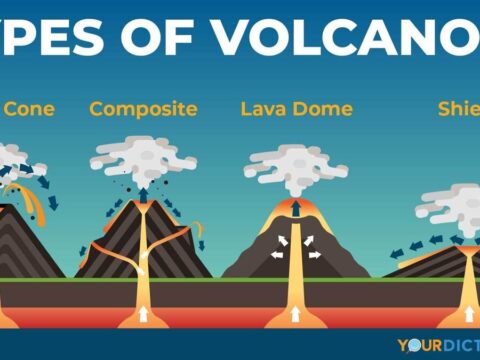
Water, the most abundant molecule on Earth, is crucial to all forms of life. Its chemical composition, physical properties, and role in biological processes make it one of the most studied substances in science. This article delves into the fundamental aspects of water, exploring its structure, unique characteristics, and critical importance to life on Earth.
The Chemical Structure of Water
At a molecular level, water is composed of two hydrogen atoms and one oxygen atom, forming the chemical formula H₂O. The oxygen atom shares electrons with the two hydrogen atoms, creating a polar covalent bond. Due to oxygen’s higher electronegativity, it pulls shared electrons closer, giving the oxygen end of the molecule a slight negative charge and the hydrogen end a slight positive charge.
This polarity gives water its unique properties, allowing it to form hydrogen bonds with other water molecules and substances. These bonds are relatively weak on their own, but their collective strength makes water a highly cohesive substance, leading to its liquid form at room temperature. Understanding water’s molecular structure is the key to comprehending its behavior in both physical and biological systems.
Water’s Physical Properties
Water’s remarkable physical properties set it apart from most substances. One of the most notable properties is its ability to exist in all three states of matter: solid, liquid, and gas. At 0°C, water freezes into ice, a solid form where molecules are arranged in a crystalline structure, taking up more space and thus becoming less dense than liquid water. This unusual expansion of water when it freezes is why ice floats on liquid water.
Another significant property is water’s high specific heat capacity, meaning it can absorb or release large amounts of heat without experiencing significant temperature changes. This characteristic helps regulate temperatures in ecosystems and is essential in climate systems. For example, large bodies of water, like oceans, act as thermal buffers, stabilizing temperatures in surrounding environments.
Water as a Universal Solvent
Water is often referred to as the “universal solvent” due to its ability to dissolve more substances than any other liquid. This characteristic is a result of water’s polar nature, which allows it to interact with a wide range of molecules, including salts, sugars, acids, and gases. When a solute, like table salt (NaCl), dissolves in water, the polar water molecules surround the individual ions, breaking them apart and dispersing them throughout the solution.
This solvency property is crucial in biological systems. For example, in the human body, water is the medium through which nutrients, oxygen, and waste products are transported. Cells depend on water to dissolve and carry essential molecules, facilitating chemical reactions and maintaining life processes.
Water’s Role in Biological Systems
Water plays a vital role in sustaining life. It is the medium for nearly all biochemical reactions that occur within living organisms. In humans, water makes up approximately 60% of the body, and it is essential for processes such as digestion, circulation, and temperature regulation. Water is also involved in cellular respiration, where it helps break down food molecules to produce energy.
In addition, water is critical for plant life. Through the process of photosynthesis, plants use sunlight to convert water and carbon dioxide into oxygen and glucose, which serve as the foundation for life on Earth. Water is also responsible for the transport of nutrients in plants via the xylem, allowing them to grow and thrive.
The Hydrologic Cycle and Water’s Global Importance
The hydrologic cycle, also known as the water cycle, describes the continuous movement of water on, above, and below the Earth’s surface. Driven by solar energy, water evaporates from oceans, lakes, and rivers into the atmosphere, where it condenses into clouds. Eventually, it falls back to Earth as precipitation in the form of rain, snow, or sleet. This cycle is essential for replenishing fresh water supplies and maintaining the ecological balance.
Water’s role in the environment cannot be overstated. It sustains ecosystems, supports agriculture, and powers industry. For example, freshwater ecosystems, such as rivers and lakes, are home to countless species that depend on clean water for survival. Additionally, water is essential for growing crops, and in many regions, irrigation systems rely on a consistent supply of water to support agricultural productivity.
Challenges in Water Conservation
Despite its abundance, fresh water represents only a small fraction of Earth’s total water supply, and many regions face challenges in accessing clean water. Climate change, population growth, and pollution all contribute to the increasing strain on global water resources. As temperatures rise, droughts become more frequent, and water availability becomes less predictable.
Efforts to conserve water, improve water management practices, and protect water sources are critical in ensuring that future generations have access to clean, safe water. Technologies such as desalination, wastewater treatment, and water recycling are being developed and implemented to address the growing demand for water. These efforts are particularly important in arid regions and areas with high population densities, where water scarcity poses significant challenges.
Water’s Undeniable Importance
Water is far more than a simple molecule; it is the essence of life, shaping the planet’s ecosystems, regulating climate, and supporting all living organisms. Its unique chemical properties, ability to dissolve a wide range of substances, and involvement in critical biological processes underscore its importance. As human populations grow and environmental challenges mount, understanding water’s significance and taking steps to preserve it will be essential for the future of life on Earth.
4o



















